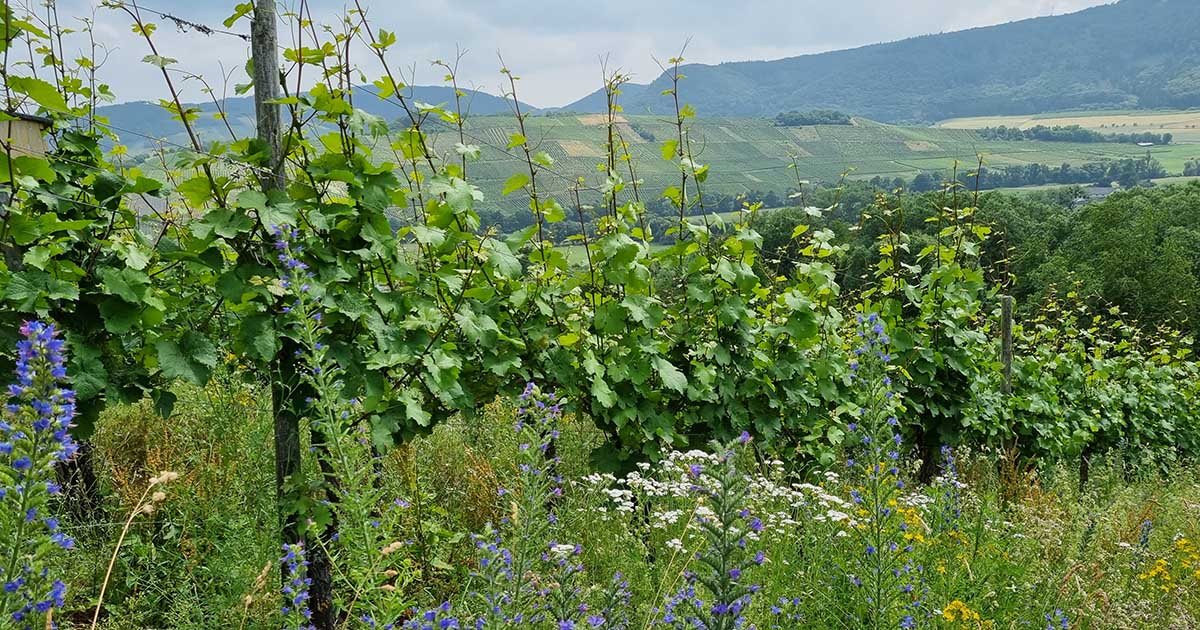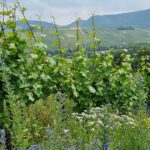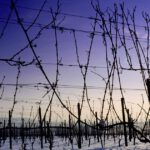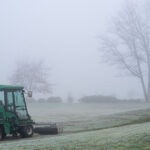When producing high-quality wine, more and more winegrowers in Germany are consistently focusing on sustainability in the vineyard, wine cellar and distribution. It is essential to understand the complexity of the vineyard ecosystem in order to actively promote biodiversity. This is ultimately the prerequisite for healthy grapes – and thus for the wines that inspire connoisseurs worldwide.
The meaning of sustainability in viticulture
Sustainability is – not only for winegrowers – the interplay of ecology, economy and social commitment. In viticulture, this means scrutinizing the entire operation over and over again. How much pesticides and fertilizers are really needed in the vineyard? What does the CO2 footprint of winery look like? How can sales be made more environmentally friendly? The use of green electricity, the installation of solar systems and last but not least the fair payment of employees are important approaches to measurably increase the sustainability of a winegrowing business. In any case, for all winegrowers applies: the decision for the best wine is made in the vineyard. The care of the vines, the knowledge of soil conditions, wind and weather – in short: the exact knowledge of the terroir – is of fundamental importance. There is also another factor whose importance should not be underestimated, namely biodiversity.
Natural diversity in the vineyard habitat
The term biodiversity refers to the diversity of plant and animal species and their genetic richness within a species in varied habitats. What does that mean for the vineyard ecosystem? In the best case, a vineyard is a species-rich and balanced habitat in which birds, insects, reptiles, worms and microorganisms live and a soil-typical flora can develop. This unbelievably diverse flora and fauna grows in green vineyard lanes, but also on shoulders and in open spaces adjacent to the vineyard. The vineyard, which consists of rows of vines, is part of a much larger system that includes meadow orchards, individual trees and the edges of the forest. Even vineyard walls, gravel paths and sandy areas are preferred habitats by many plant and animal species. Interesting: The vines benefit directly from the biodiversity in their environment. They show greater resilience and live longer, a balanced ripening phase leads to more substantial grapes of noticeably better quality. How exactly does this interaction work?
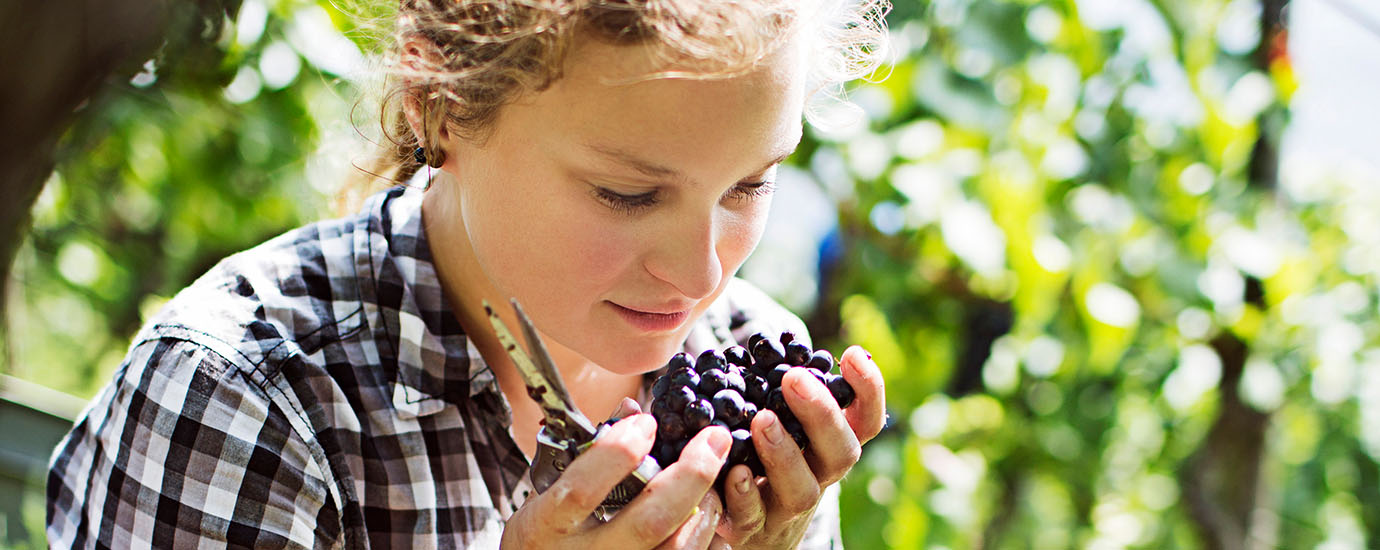
The vine as part of nature in the vineyard
Like all plants, the vine generates its energy through photosynthesis. However, light, water and carbon dioxide not only nourish leaves, branches and roots. A single vine supplies 30 percent of the energy generated to the five trillion microorganisms that live between and around its roots. These give something back to the vines: they provide them with minerals and protect them from pests! This beneficial symbiosis is promoted by the oxygen that enters the soil through tunnel systems dug by worms. The resulting soil structure is perfectly suited to absorbing plenty of water, which supplies the vines as needed. In this context, the controlled greening, mowing and mulching is an essential contribution of the winegrower to the sustainable cultivation of his vineyard.
Plants and animals in and around the vineyard
It goes without saying that very different communities of fauna and flora form in different sun and altitude areas. In particular, the dry and hot steep slopes thrive on the wealth of structure that the vineyard offers. Sand lizards and green lizards cavort in stone walls, ground bumblebees and beetroot bees build their nests in the loess, red-backed shrike, nightingales and skylarks populate the warm air above the rows of vines and kestrels are after the voles, much to the delight of the winegrowers. Stinging nettles on the edge strips are the perfect nursery for butterfly caterpillars, meadow sage, real dost or the common viper’s bugloss offer nectar and, incidentally, cheerfully colorful splashes of color. The diversity of plants and animals is significant far beyond the vineyard: Insects serve as food for birds and around 80 percent of our crops depend on pollination by insects. If only one part of this ecological system is permanently disturbed, this has effects that affect not only the vineyard but entire food chains.
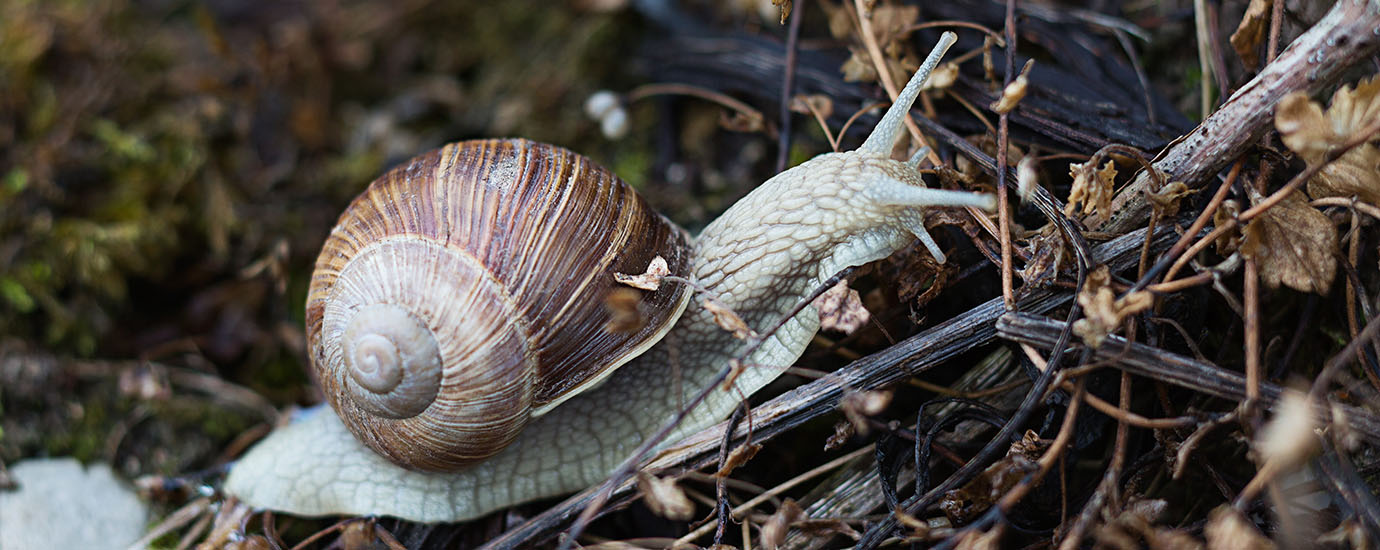
The vintner as a keeper of diversity
The vineyard with its rows of vines is therefore not a solitary field, but part of a diverse habitat whose incredibly complex relationships draw attention to the great importance of sustainable viticulture. Nature and dedicated winemaking work make it possible for flora and fauna to thrive in the vineyards and for the vines to deliver grapes of the desired best quality. The vintner, as the keeper of natural diversity, thus provides himself with the best argument for sustainable vineyard management.
Would you like to find out more about the vineyard as a habitat, get to know the plants and animals in the vineyard and hear interesting facts about sustainable viticulture? Then you should definitely take part in a wine experience in Germany!

